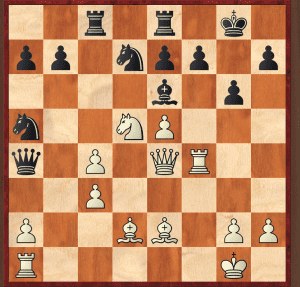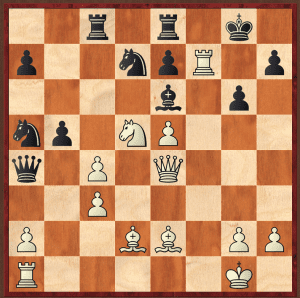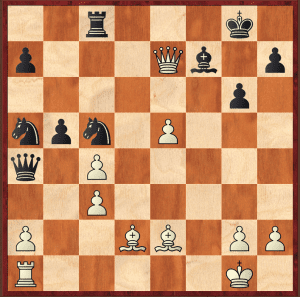Irrational Complications
The following piece of analysis is taken from chapter five of Dvoretsky’s Analytical Manual.
As customary, Dvoretksy’s introduction follows:
This next game was commented upon (quite superficially) by Herman Pilnik in the weekly 64 (which later became the monthly magazine, 64 – Chess Review), and by Petar Trifunovic in chess Informant #10. A few years later, Adrian Mikhalchishin published a more serious analysis of its short critical stage in Shakhmaty v SSSR, 12/77, but this, too, was far from perfect, which should be no surprisem since the game was clearly out of the control of both players; the outcome had become totally unpredictable. In the end, as they say, the stronger player won, but objectively speaking, the outcome could also have been reversed.
When I first set out to analyze this game, I did not yet employ computer programs. This article, with its analysis, was published on the site ChessCafe.com. As I was preparing this material for the book, I saw that, although I had given, by and large, a correct depiction of the battle, many of the variations required revisiting.
In the preceding chapters, we have dealth with problems having well-defined solutions, which could, in principle, be calculated to the end (although perhaps with great difficulty). But here, the answers to some of the questions could only be obtained by wide-ranging analysis employing computer pgorams – or else, much more quickly, by intuition.
The role played by intuition in chess is enormous. After all, human capacity is not unlimited; decisions must be made in the context of limited thinking time. Therefore, we constantly rely upon intuitive guesses and feelings.
The literature of teachings makes no serious study either of the forms in which intuition appears during the course of battle, or the methods of developing a chessplayer’s intuition. The author’s views on these problems are set out in the article The Development of Chess Intuition, published in SFC-5. Here I should only like to draw the readers’ attention to a few important points, which should help one’s thinking during some of the exercises in this and the following chapters.
1) To reach a decision intuitively does not at all mean working completely without calculation. The task is to analyze the minimum number of the most important variations, and thus to gain an idea of which continuation offers the best prospects. That minimum may vary widely, both in the size of the variations an in their quantity – not only depending on the peculiarities of the position, but also on a player’s personality, experience, playing leve, and calculative and evaluative abilities.
This is why, in my commentary, I rarely draw a sharp boundary between the minimum number of necessary variations and those analytical indicators that do not need studying before making a decision – for different players, that line sometimes turns up in different places. Nevertheless, I try to determine that line (for example, in the Simagin – Leonovich game from the previous chapter, it was the commentary after 29 Bf4! Ba6 30 Rf3!)2) An intuitive decision must be based, not just on one’s supposiitons about the analytical superiority of this or that line, but also on one’s feelings about the purely practical chances: level of comfort, the complexity of deciding pending problems and the likelihood of making an error, the dangers ahead of both players, etc.
3) The area in which intuition may be useful in chess is a large one, but still not infinite. In many cases, we should not allow ourselves to be swayed by it and must calculate accurately. A chessplayer’s highest mastery consists of employing precisely that method of attaining the truth which is most closely attuned to the current situation – and, where necessary, of skillfully combining them together.
When considering such themes, I usually recall an old Western prayer, which deals with a considerably more widesprend and important problem, but one similarly structrued:
Lord grant me the serenity to accept the things I cannot change,
Courage to change the things I can,
And the wisdom to know the difference.We shall not be spending too much time on the first part of this game, immersing ourselves in the position only when the decisive events get underway.
Exercise 1

Black to play. What is the best continuation?
Exercise 2

Black to play. White has just sacrificed the rook on f7. Can you find the best continuation?
Exercise 3

Black to play. Decide between Ne6 and bxc4!
Exercise 4

In the game, Quinteros lost quickly after 26 Qh6+. How did Fischer refute this move and what was better alternative for White in the given position?
You will find your answers to the problems below. Due to the length of analysis, I have divided the solution in seven separate parts. Hope you will enjoy it and avoid getting confused.

